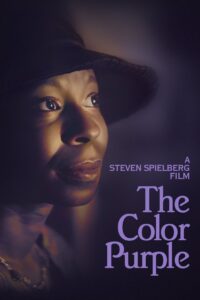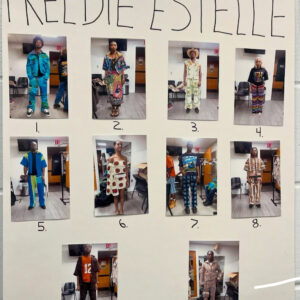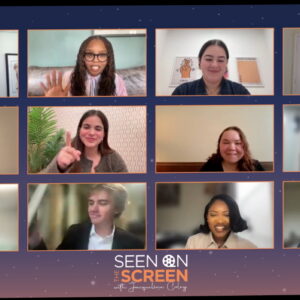Entertainment | February 7th, 2024
Revisiting the 1985 “The Color Purple” with the Meek-Eaton Black Archives
By: Cariane Geffrard | Staff Writer

On Thursday, February 1, a modest crowd gathered at Florida A&M University’s Meek-Eaton Black Archives lecture hall to watch the 1985 movie adaptation of Alice Walker’s novel, “The Color Purple.”
Coinciding with the unveiling of the museum’s newest exhibit focusing on music history and the 2023 release of the musical film remake of “The Color Purple” Broadway screenplay, this viewing event began MEBA’s “Monthly Vintage Film Series and Talk Back.”
“This idea spawned in my office,” Timothy Barber, the museum’s director, said. “Before I came to Florida A&M, [I had an idea] to start a historic movie series at Florida Memorial. But of course, I’m here now – so, we thought about bringing this here and watching “The Color Purple,” and then we thought about some other movies that we’ll be having coming up.”
As the name suggests, the “Vintage Film Series” (for short) is a recurring movie screening tentatively scheduled for the first week of each month that hopes to introduce classic films to a newer audience, Generation Z.
It is free and open to the public, not limited to only FAMU students. For the very first movie, it was decided that “The Color Purple” would be a perfect kickoff to Black History Month in February as it beautifully executes significant themes of race, gender and the intersectionality between the two.

Poster for “The Color Purple” (1985) dir. Steven Spielberg || Photo Courtesy: Google
“The Color Purple” (1985) Story
“The Color Purple” is a movie that has cemented itself in popular culture in various ways through iconic quotes like “You told Harpo to beat me?”, “Harpo! Who this woman?” and “I think it pisses God off if you walk by the color purple in a field and don’t notice it,” and emotional acting that propelled the careers of modern legends like Oprah Winfrey, Whoopi Goldberg and Danny Glover.
The themes of misogyny, womanhood, colonialism, unjust racism, and more were explained through the characters’ lives and letters. They were set against what should have been a destitute backdrop of an impoverished, rural 1900s Georgia. Yet, embedded in the film were details of rich purple, orange, red, and yellow set to the lively music of Quincy Jones.
It spoke of a return to Africa and its traditions positively with a majorly Black cast at a time when that wasn’t too common. It told a story of how one woman, Celie, can suffer through intense physical, sexual, and emotional abuse yet come out on the other side of it hopeful and loved.
For a movie so critically acclaimed that it would become nominated for 11 Academy Awards, how could this story garner so much controversy and lose all 11 nominations?
Interestingly enough, the brunt of the criticism came from the Black community.
The uncomfortable motifs of the film shed light on the sometimes uneasy relationship between Black men and Black women. One 1986 New York Times article by E.R. Shipp discusses a protest outside of a Chicago theater because of claims by mostly Black men that the film “paints a misleading picture of Blacks in America and distorts their history.”
Post-Movie Discussion
For this month’s event, the post-movie discussion was moderated by Dr. Yanela McLeod, the director of Communications and Alumni Relations for FAMU’s College of Social Sciences, Arts and Humanities and an adjunct History professor. In a deep purple trenchcoat, McLeod led the intimate discussion with audience-centered questions such as their perspective on the storylines presented, the juxtaposition between the original movie adaptation and the 2023 remake, and what color means to them.
“I was telling Mr. Barber that I didn’t see [The Color Purple] as a male-bashing film,” McLeod said. “I saw it as one that was enlightening these dark things that are quiet – the trauma that people are holding in their bodies.”
In attendance was 19-year-old Janiaya Prince, a junior Business Administration student at FAMU and the oldest child of five siblings.
“I think that we forget the trauma that our ancestors went through, and [even] some of the trauma that gets passed down to us, and we don’t even realize it,” Prince said. “So this [movie] is a reminder that ‘This did happen; this isn’t just a movie, this was real life.’”
What’s Next for the “Vintage Film Series and Talk Back?”
According to the Black Archives’ Digital Humanities Program Manager, Barbara Twyman, the intent of the “Vintage Film Series and Talk Back” is to watch and discuss movies that were filled with purpose.
The goal is to leave the viewer feeling as if they gained something out of it.
“Starting the Vintage Film Series started with a conversation between me and Cariane where [I found myself repeatedly asking her], ‘Wait, so you haven’t seen this movie?’” Twyman said. “It started with a conversation, and I like how, in our office, we start big projects out of small conversations.”
Next month, the Black Archives plans to screen “The Wiz” (1978). This would most likely be in tangent with FAMU’s Essential Theatre production of the play, with hopes of inviting some cast members from the show to lead the discussion.
More information on showings and reserving seats can be found on the Meek-Eaton Black Archives Instagram page, @famublackarchives.






